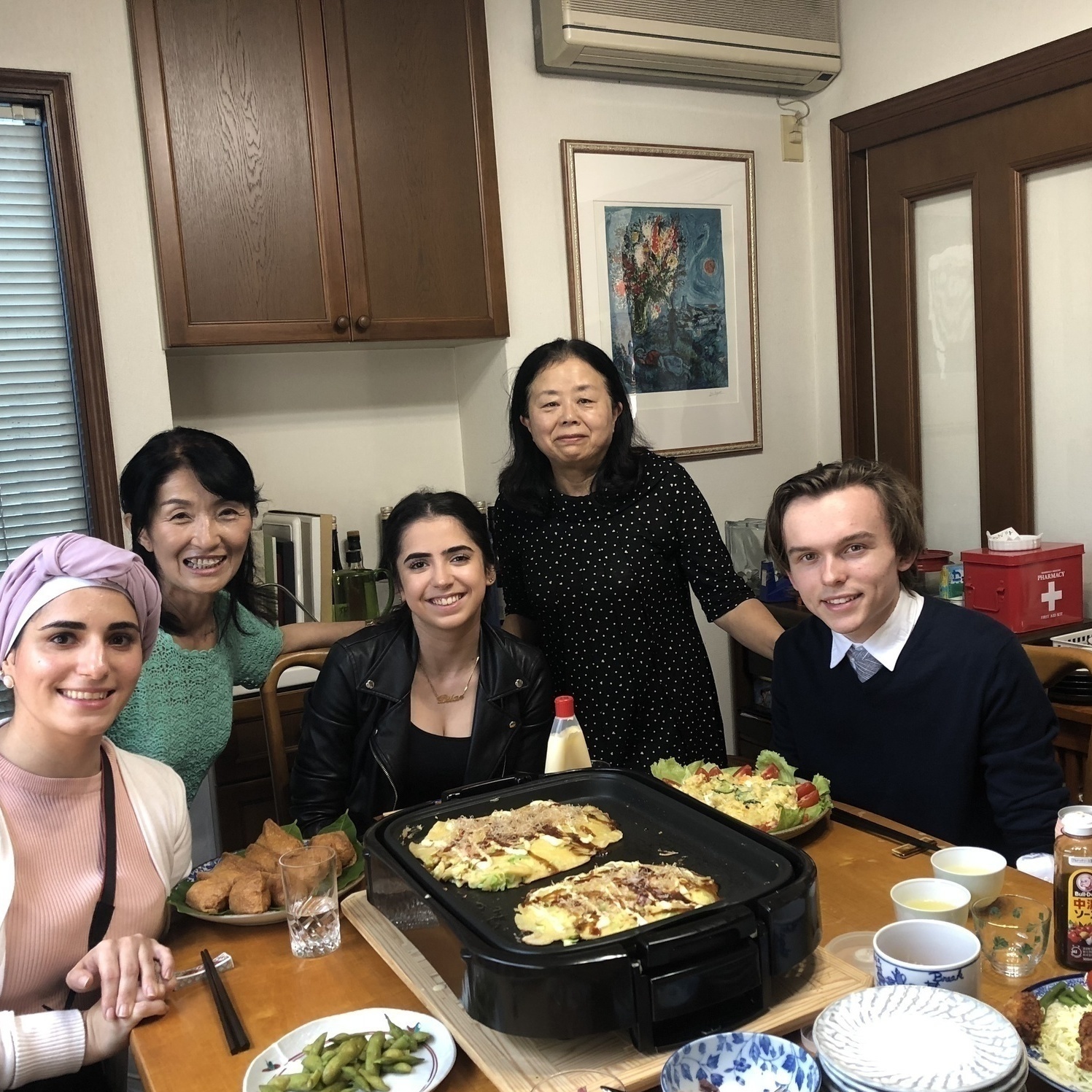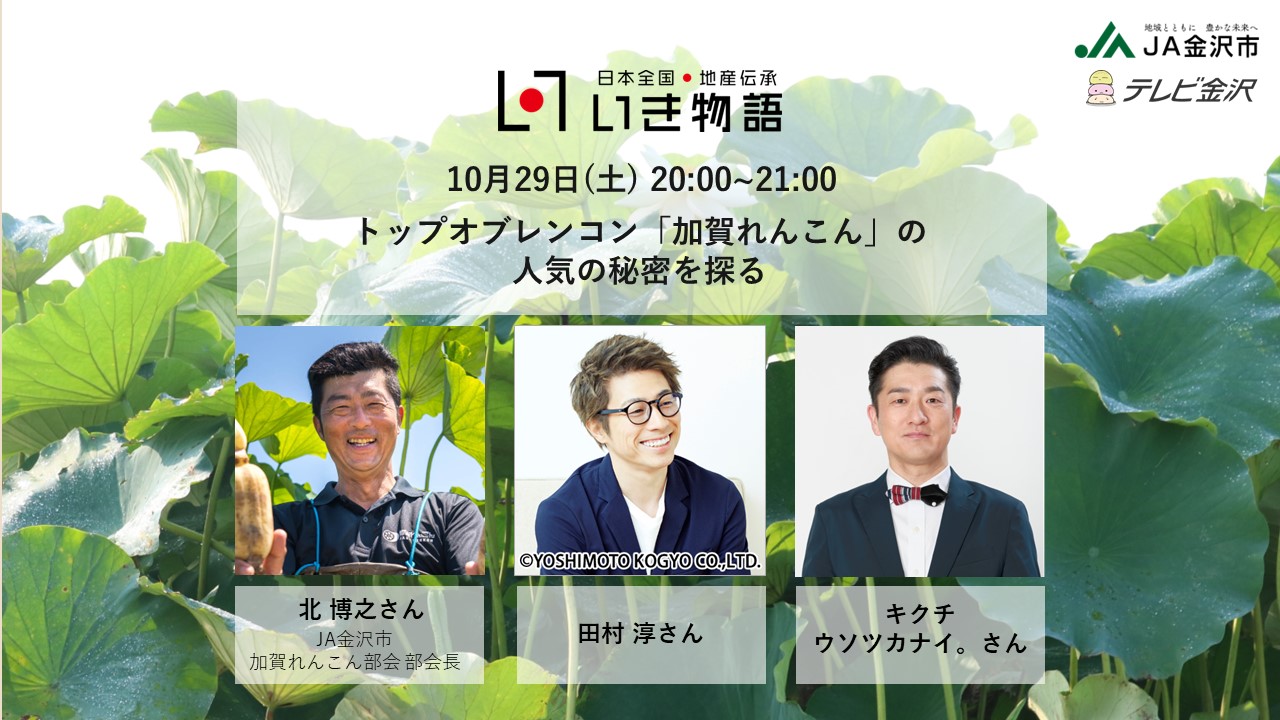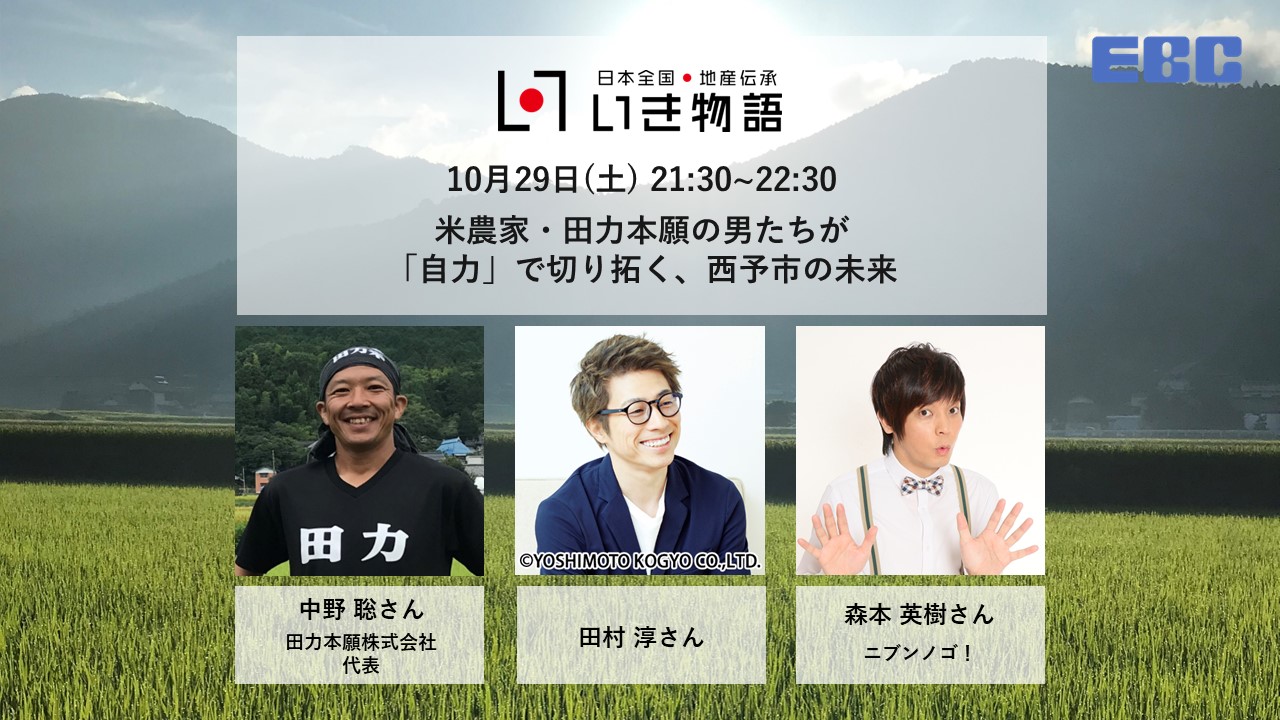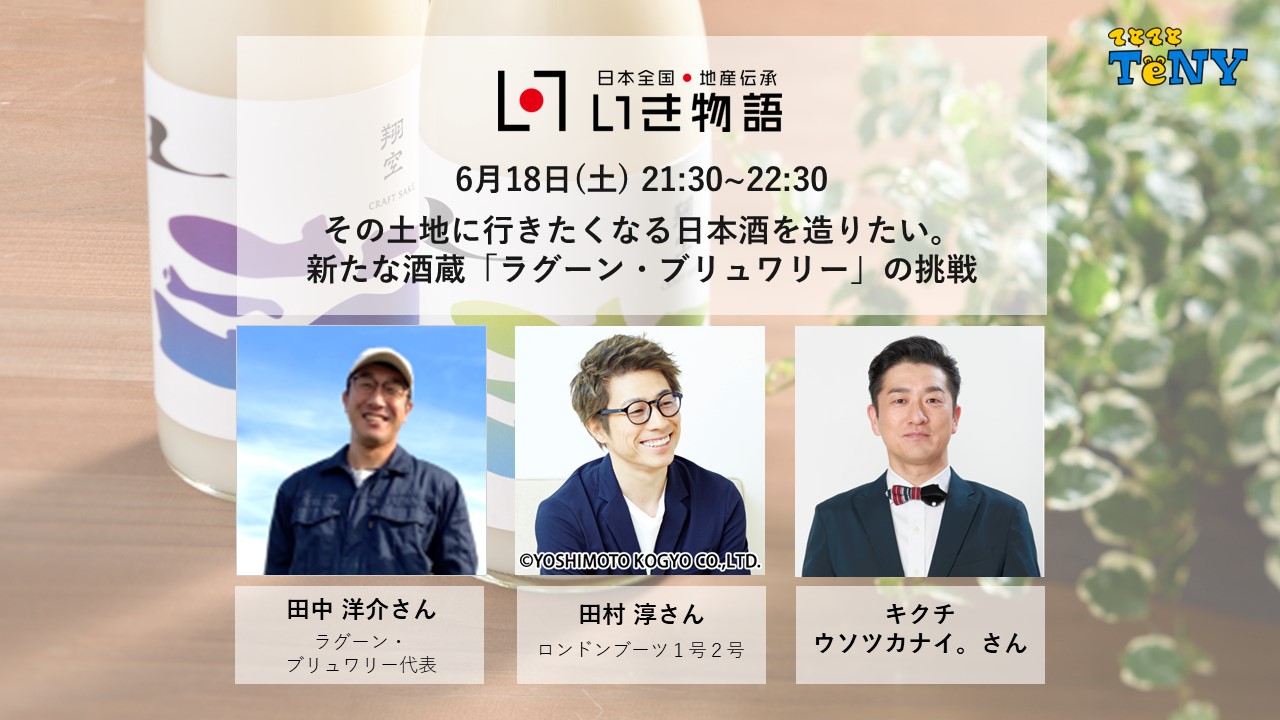Meeting Your New Family In Japan ; Japanese Home Visit Experience Near Tokyo
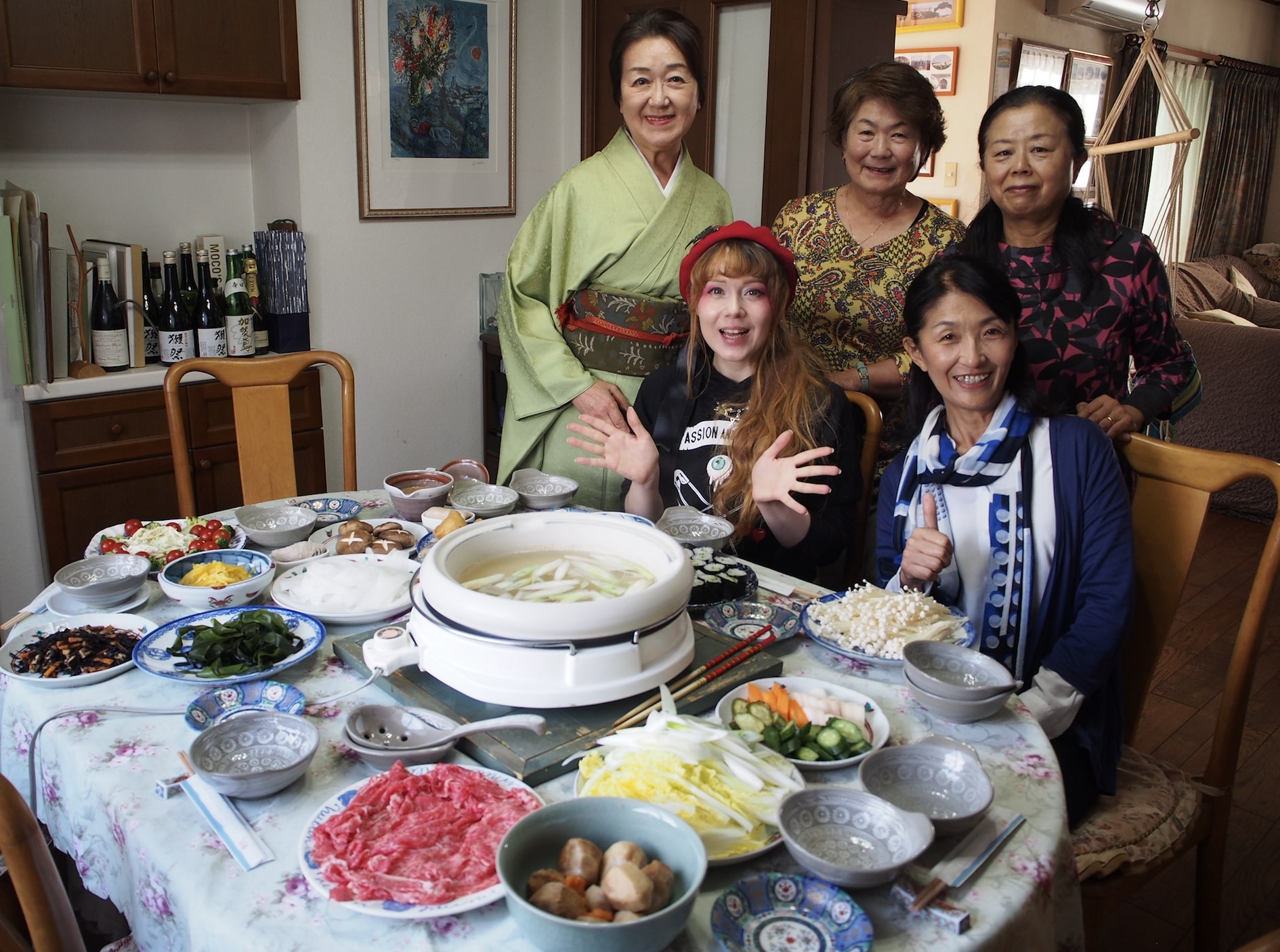
Summary
In Kanagawa, a guide and her friends have come to create the ultimate activity to share Japanese culture. They offer a rural Japanese home visit experience, complete with cooking Japanese cuisine, dressing in kimono, practicing Japanese calligraphy, learning to play the Japanese instrument and even doing a tea ceremony. I went to experience a day packed to the brim with some of the best parts of Japanese culture, that many average tourists never get to participate in.
What Does A Japanese Household Really Look Like?
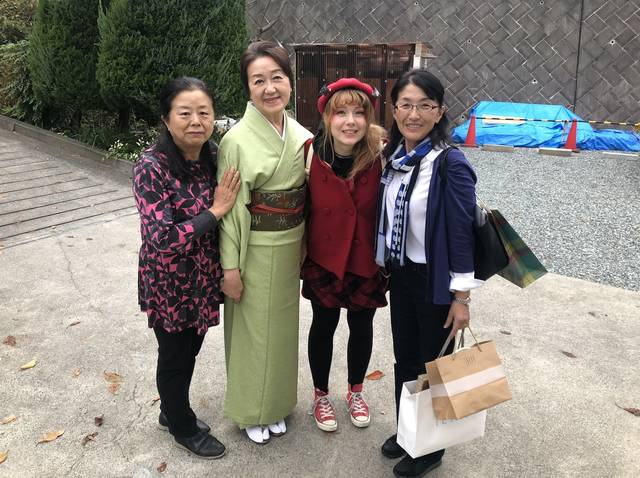
Many foreigners who visit Japan will never get a chance to set foot into a real Japanese household. Inviting someone from the outside into the most private area of one’s life is a big deal for many Japanese people. I have heard of Japanese family members who never even visited their spouses' houses before. That’s why this home visit activity instantly caught my interest. I messaged Setsuko, my guide for the day, and she gave me helpful advice in advance and checked for my dietary restrictions. When finally the day arrived, I was eager to go on my journey outside of Tokyo.
Going To The Countryside
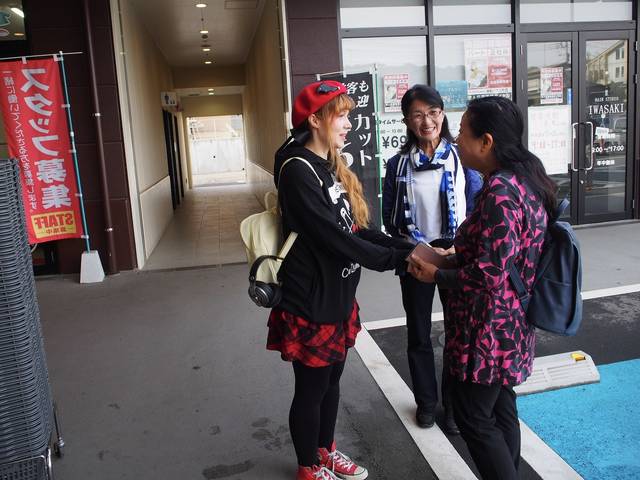
Only one hour away from Shinjuku, in Kanagawa prefecture, lies the beautiful little town of Hadano. Setsuko had recommended I take the Romance Car Express train there. Thanks to that piece of advice, I left rush-hour stress free in the morning and got a cozy seat. While riding, I could see Japan practically transform around me, changing from tall skyscrapers, to smaller apartment blocks, to finally houses, fields, and mountains. This already revealed a side of Japan people from Tokyo often misses.
I got off at Hadano station and was friendly greeted in fluent English by Setsuko and Taeko, her friend. Taeko was wearing a gorgeous silken kimono. I took a deep breath, breathing in the fresh air. I got picked up by car and we drove nine minutes to the nearest supermarket, which gave me the chance to look further at the cute houses and rural life of Hadano.
Shopping At A Japanese Supermarket
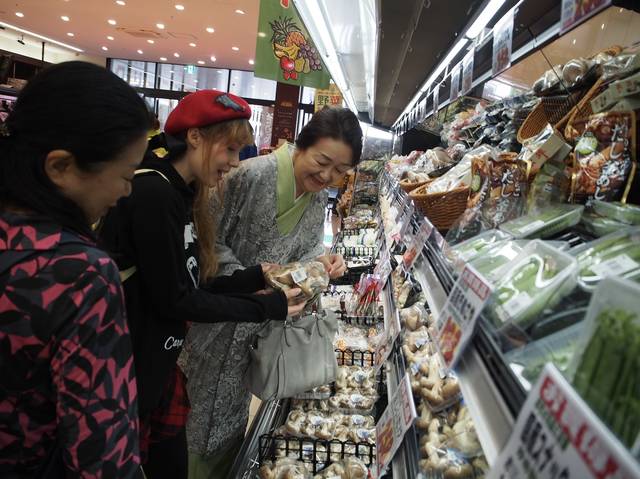
At the supermarket, we were greeted by a friend of Setsuko’s: Setsuko. We all had a laugh about their name similarities and I was offered to name her friend Setsuko K. She is the owner of the house we were going to visit. After our introductions, Setsuko, Setsuko K, Taeko and I went inside the Japanese supermarket. My entourage of nice Japanese ladies helped me select more foods for lunch and explained unusual food items in English to me. I really appreciated that everyone always checked on my food intolerances but also if there were foods I didn’t like. According to Setsuko, it is possible to prepare meals for vegetarians or even vegans during this home visit experience as Setsuko K is already experienced in making foods for people with special dietary needs. Her niece was born with a special dietary need, and since then she taught herself how to cook for people that require a different diet. In Hadano, I could see certain foods and items that were not sold in Tokyo, or not for the same price, so it was fun shopping around with the help of Setsuko and her friends.
From the supermarket, we took a short walk to the Japanese family house. We walked past little fields, a little vegetable stand where private field owners sold fresh items, and even a beautiful old Japanese shrine. I took some pictures and left a prayer, wishing that we would all have a fun day.
A Real Japanese House
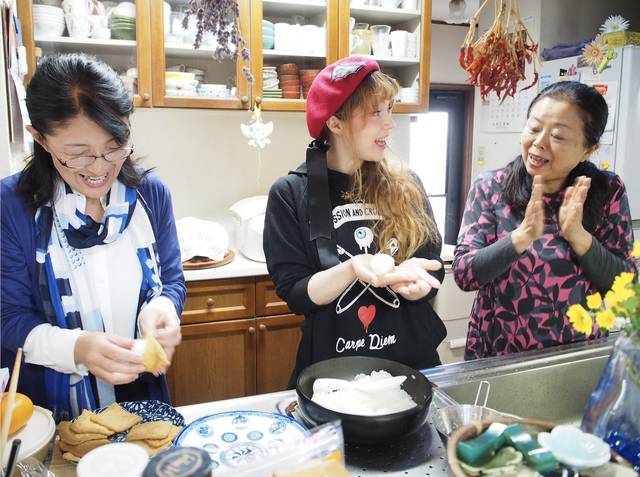
Setsuko K’s house is not like your typical Japanese house. Rather, it’s a large family house, complete with a cute terrace and a garden that even has fruit trees. Upon entering I was greeted by Tomoko, the final member of the tour. I was fascinated by how large the house was. For a Japanese home, there were so many rooms and lots of beautiful artwork in frames all around. To my left were two tatami rooms. Closest to me was a table with calligraphy tools laid out, and a house shrine near the ceiling. On the far end, I could see a Buddhist house shrine and a large Japanese instrument. Setsuko K told me that many items in her house had been passed down for several generations, for example, a spear from the Edo period.
The large living room stretched to both sides and connected to the dining room, but it also had a side corner. There, the tatami mats were placed on a higher level with a square hole in the middle. A small table, called a kotatsu, stood over that hole. During winter, this traditional table can be heated and guests can have warm feet while still sitting on the authentic tatami. The two walls around the tatami were glass, so family members could read some of the books near it while glancing outside occasionally.
Cooking Japanese Food
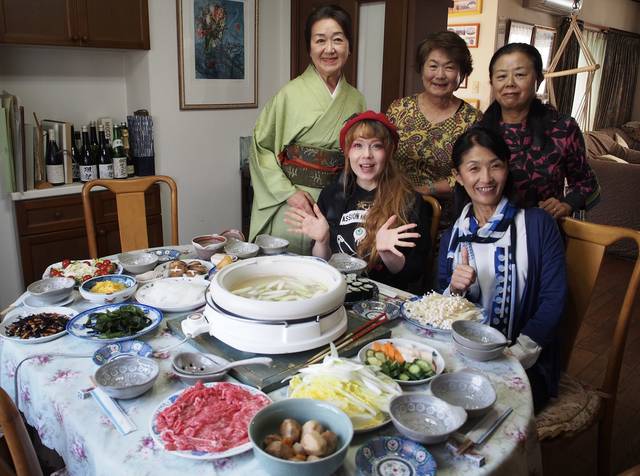
Japanese cooking is generally a feast not only for the taste buds but also for the eyes. I got helpful advice on how to cut some of the ingredients so they would not only look but taste good. Mushrooms get a little cross on top, so they look like a cute hat. Leek is cut sideways so it looks more slender. Our goal was to make Japanese hot pot, but as it is with Japanese cuisine, there are generally many smaller dishes that people enjoy it. Therefore, I also learned how to prepare Inari sushi, a dish where rice is packed into sweetened tofu pouches. With the three ladies telling me how to cook, I felt like I was visiting the house of my aunts and cooking food with them. I even got taught how to make a sushi roll. My results were not as pretty as the ones of my new Japanese aunts but I got lots of praise along the way. Setsuko K also knew a lot about the reason why Japanese foods like miso are so healthy and showed me some cooking books to extend my knowledge.
Once we were all done preparing, we had shabu shabu, a Japanese hot pot dish in which thinly sliced meat is swished in hot soup. The “shabu shabu” is supposed to be the sound of the meat getting swished in the hot broth. However, there were also other dishes, some of them prepared in advance. My advice for every Japanese traveler is to try it. Trying foreign food always extends one’s horizon and makes one dive into the culture more.
While eating we talked about our backgrounds. Setsuko and her friends are all part of an English theatre group. When Setsuko got her license as an official tour guide, all friends came up with the idea of making an activity that would let foreigners enjoy the best parts of Japanese culture. Each of the ladies has her own reason for wanting to show people from foreign countries the best of Japanese culture, as they have also experienced living abroad before.
Wearing A Japanese Kimono
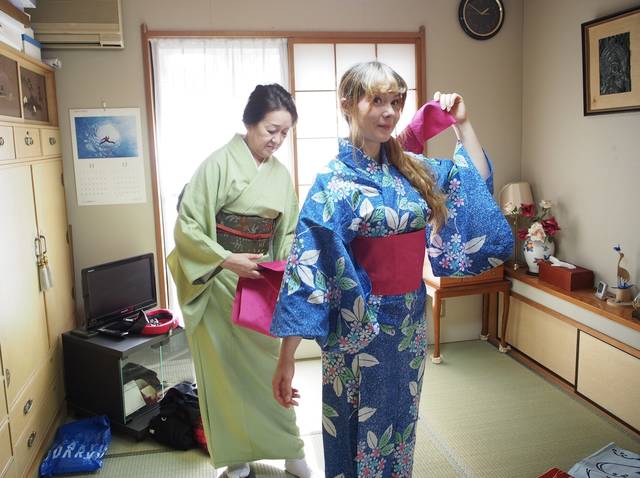
Taeko, the lady in the beautiful silken kimono took me upstairs after our meal. Several colorful summer kimonos were laid out in a room with authentic green tatami mats. I was spoiled for choice but picked a bright blue summer kimono. Even the more simple summer kimono are very difficult to wear that Japanese girls often have to ask their relatives to help them get dressed. Taeko is experienced in this, so she helped me into my summer kimono patiently and tied my obi belt. Once I finished, I felt like a Japanese princess and took a lot of pictures and selfies before heading downstairs to the next activity.
A Japanese Calligraphy Lesson
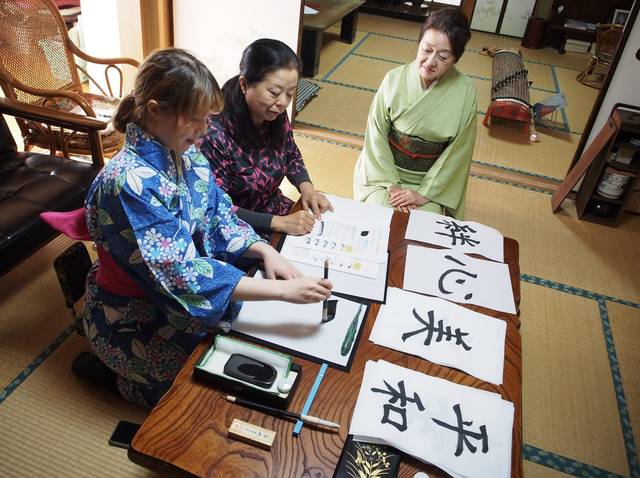
If you are a fan of Japanese culture, you will already have seen some of the beautiful calligraphy art pieces. Sometimes a simple kanji symbol can hold meaning and move one’s heart with the intensity and expression of ink on paper. In the first tatami room, I kneeled by the lowered table and marveled at the tools. Japanese washi paper, black ink, a case, and a bamboo paintbrush was already laid out there for me.
Setsuko K sat down next to me and explained how to dip the brush and hold it correctly. She even brought some papers explaining the names of certain calligraphy techniques in English. I remembered drawing straight lines from the calligraphy class in a Japanese school. Once I felt more confident, we started practicing other kanji symbols. My brush glided over the paper and I could see an improvement after only a short time. In the end, I felt super happy and satisfied with my calligraphy creations and got applause from the ladies. I was handed two paper frames to put behind two of my favorite symbols to take home as a gift.
Learning To Play The Koto
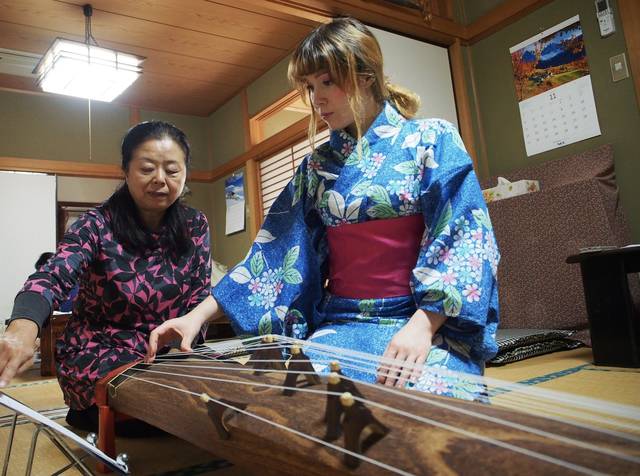
The Japanese koto is a long stringed national instrument of Japan. To an amateur’s eye, it looks like a tree has been cut in half, carved in a slight curve and decorated with several strings. This particular koto was a gift to Setsuko K’s grandmother from her grandfather in the days when ladies entertained their husbands by playing music in the house. It is played with finger picks. Setsuko K had learned how to play the instrument, which made her a great teacher. She played the song “Sakura Sakura” to us and then gave me a chance to have a go at it myself. She would name me the number of the string and I would pluck it accordingly. I am notoriously bad at learning musical instruments, but somehow her encouraging words helped me overcome my general musical barrier. I managed to learn how to play the song within only what seemed to be a short time for me. It was definitely unexpected to me. Japanese traditional instruments, especially those that are as large as the koto are generally rare to be seen so I relished the chance to touch and even play it.
The Skill Behind A Japanese Tea Ceremony
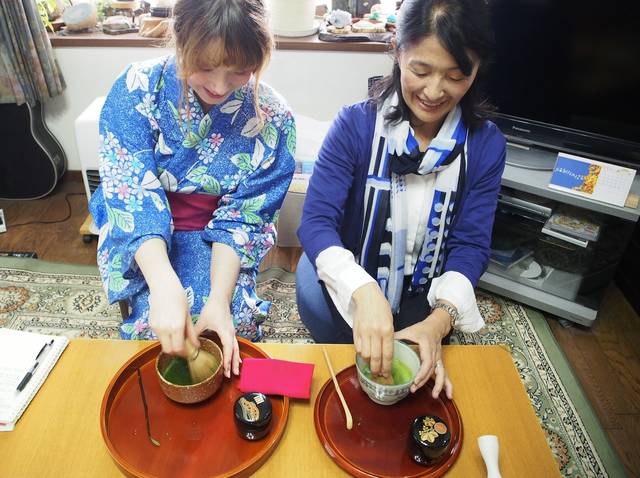
Respect, harmony, purity, and tranquility are some of the fundamental words in the art of a Japanese tea ceremony and they are strongly connected to Japan’s hospitality. I am a great lover of everything around green tea. Japanese tea ceremonies, with their elegant movements and rites, hold a certain fascination for me. Setsuko K owns a traditional tea set from the Gifu prefecture. Tea ceremonies in the old days could also be done for business meetings, and even her grandfather was skilled in the art of tea ceremonies. The person preparing the tea and the person receiving the tea both exchange certain formalities and words of respect with each other. There is much meaning behind the art of preparing tea for a guest, and Setsuko and her friends guided me all the way through the ceremony.
I first got a special small piece of Japanese sweets called Wagashi. After my mouth was filled with the delicious sweetness of sweet beans, Setsuko handed me a delicate bowl of freshly brewed and prepared rich green tea. After exchanging words of gratitude, Taeko and I received our tea bowls and drank it. Guess what, slurping the last part of the green tea is allowed! After I took part in the ceremony, it was my chance to give it a go. Setsuko showed me how to use a little brush in making tea. Mine didn’t look nearly as fluffy whipped on the top, rather like foamy bubbles, but Setsuko K received it graciously. Many Japanese ladies of Setsuko and her friend’s generation will generally have been taught Japanese arts, such as tea ceremonies, ikebana flower arrangement, and calligraphy. Hearing about their stories, I learned how much Japanese culture is passed on in the family.
Leaving The Home Away From Home
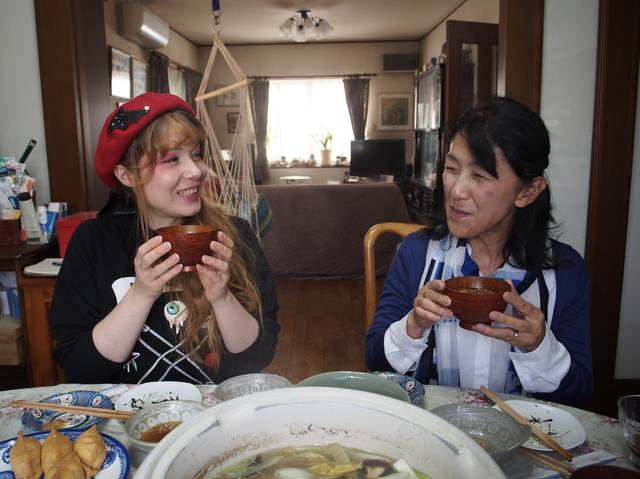
How one day can change so much. In just one day I had shopped in a Japanese supermarket, cooked foreign cuisine, chatted with the locals, got dressed in a summer kimono, tried calligraphy, learned to play the Koto and done a tea ceremony. All of these activities are sometimes separately offered in Tokyo, but this is the first time I saw an opportunity where I could experience them all in just half a day. I believe the hours with Setsuko and her friends had enriched me and my knowledge of Japanese culture more than a tourist attraction could because they had simultaneously touched my heart.
After the tea ceremony was over, I changed back into my regular clothes and went to say my goodbyes. I had already grown so fond of Setsuko and her friends that I hugged them goodbye. To me, it felt like I had gotten a real Japanese family for a day.
I asked Setsuko why she wanted to make a home visit experience. She said:
“When we go abroad we want to see life, we want to see how people live. When people come to visit us they can see the big sightseeing places. But this gives people the chance to see how people live and share culture and food.”
Setsuko and her friend’s home visit experience gives foreigners a rare and unique glimpse into real Japanese life, food, traditions, and arts. If you are visiting Hakone for the weekend, for example, you can visit them in Hadano on Monday afterward. It is also near Yokohama and can be reached from Kamakura if you like combining several trips into one.
For visitors who want to meet the real Japan, this is a wonderful chance to get closer to a culture that doesn't necessarily let strangers enter their houses. I am already considering bringing my family to this experience in the future. Then my family can become part of the culture that I like so much. I am grateful I could step inside a Japanese household and have a Japanese family for a day.
Information
PRO:
It’s a truly unique experience. See and feel how life is lived away from the big cities and look inside the closed doors of a Japanese house. Cooking, wearing a kimono, writing calligraphy, learning music and participating in a tea ceremony make this an activity packed, the fun day you will definitely remember. For being able to experience so many popular activities of Japanese culture all at once, it is also a really good price.
TIP:
This tour can be changed depending on your dietary needs. Message Setsuko in advance with your requests so she can arrange for your stay.
GUIDE:
Setsuko is passionate about foreign visitors and genuinely cares about showing foreigners the best parts of Japanese culture. She and her friends created this home visit activity and each of those ladies is an absolute treasure.
LOCATION:
The home visit gives you the chance to see the real, rural Japan. It's in Hadano, a charming city, about 60 minutes away from Shinjuku station. The air is cleaner and it's surrounded by beautiful Japanese nature.
LANGUAGE:
Setsuko and her friends speak English fluently and are great at explaining Japanese culture in detail.
TIME:
The home visit experience is offered twice a month. If your schedule doesn’t match the ones on the WOW-U site, you can always contact her and ask in advance if she and her friends can arrange for a different day. A general day starts at 10:00 in Hadano and finishes around 15:00.
PARTICIPANTS:
At least a minimum of two people should come to the home visit and a maximum of 6 adults. Children are welcome too. Setsuko and her friends love kids and know games to play with them. If you let her know in advance, they can also arrange for children’s summer kimono.
OPTIONAL:
You can opt to do all activities or only select a few if you would like to focus on one of them in more detail. For example, if you want to experience the tea ceremony in more depth but don’t want to play an instrument, that can be arranged.
INCLUDED:
Food for lunch, kimono wearing experience, calligraphy lesson, music lesson, tea ceremony, and tea ceremony sweets.
Tour Information
Visit a local Japanese home, get to know the way people live! In this tour, you will visit a loca...
Visit a local Japanese home, get to know the way people live! In this tour, you will visit a local Japanese family in a small suburban town to the southwest of Tokyo. Participating in this activity, you can experience cooking Japanese dishes with a lovely Japanese family, once your hard work is done, we get to eat the delicious fresh and organic food that you helped prepare. The tour begins with shopping at local stores and then you will help cook simple Japanese dishes with the family, in their kitchen. The highlight is eating the delicious home-made meals, with a warm and friendly Japanese Family. After lunch, you can enjoy whisked Japanese green tea (matcha) and wear summer kimono (yukata). It will surely become a great memory of your stay in Japan!!
Sponsored Links
Unmissable Tours
Expand your horizons by interacting with diversity. Take a look at guided tours on which you can connect personally with the guides and have truly extraordinary experiences.
Search
